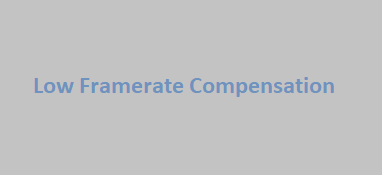What is Low Framerate Compensation?
Low frame rate compensation (LFC) is a technique used to improve the viewing experience of displays with low refresh rates, particularly in situations where the frame rate drops below the native refresh rate of the display. This technology was introduced to provide smoother motion and reduce visual artifacts such as stutter and tearing, particularly in fast-paced content such as video games and action movies.
Historically, LFC was first introduced as a feature in AMD’s FreeSync technology in 2015, which is designed to synchronize the refresh rate of the display with the frame rate of the graphics card, eliminating tearing and stuttering that can occur when these two rates are mismatched. However, the problem with FreeSync was that it only worked within a certain range of frame rates, typically between 30 and 144 Hz. When the frame rate fell below this range, the display would revert to its native refresh rate, resulting in visual artifacts and a less smooth viewing experience.
To address this issue, AMD introduced LFC as part of FreeSync 2 in 2017, which allows the display to compensate for frame rates that fall below the minimum refresh rate of the display. This is achieved by creating multiple frames for each single frame, which are then displayed in rapid succession, effectively simulating a higher refresh rate. This results in a smoother viewing experience and reduced visual artifacts even at low frame rates.
LFC’s biggest competitor is Nvidia’s G-Sync technology, which uses a similar approach to eliminate tearing and stuttering but also provides a variable refresh rate (VRR) to enable smooth and tear-free gameplay even when the frame rate fluctuates. However, G-Sync requires a proprietary hardware module in the display, which makes it more expensive than FreeSync and limits its compatibility with a wider range of displays.
Requirements
To use LFC, the display must support FreeSync or FreeSync 2, and the graphics card must also support these technologies. This means that users with older graphics cards or displays that do not support these technologies will not be able to take advantage of LFC. Additionally, some users may find that LFC introduces a slight input lag, which can affect their performance in fast-paced games.
Advantages
Despite these limitations, LFC offers significant advantages for users who are sensitive to visual artifacts and want to improve their viewing experience. This is particularly true for gamers, who often require fast and smooth motion to stay competitive and enjoy their favorite games. LFC can also benefit users who watch fast-paced content such as action movies, sports, and other types of video that require high frame rates to look their best.
Final words
In conclusion, low frame rate compensation is an important technology that improves the viewing experience of displays with low refresh rates. It was introduced to address the limitations of earlier technologies such as FreeSync, which only worked within a certain range of frame rates. While LFC’s biggest competitor is Nvidia’s G-Sync, LFC has the advantage of being compatible with a wider range of displays and graphics cards. While LFC does have some limitations, such as the need for FreeSync-compatible hardware and the potential for input lag, it offers significant benefits for users who want a smoother, more immersive viewing experience, particularly for gamers and fans of fast-paced content.

